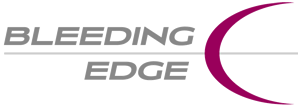
For most of us, the internet serves as a gateway to information, services, and products. However, for millions of people with disabilities, accessing and navigating the web can be a daunting task. Web accessibility addresses this issue by ensuring that websites and web applications are designed and developed in a way that accommodates users of all abilities, creating an inclusive online experience. In this article, we will delve into the concept of web accessibility, legal requirements, trends in web accessibility lawsuits, and the benefits of implementing a comprehensive web accessibility solution. We will also introduce our latest offering, a cutting-edge web accessibility implementation plan.
Understanding Web Accessibility
Web accessibility refers to the practice of making websites and web applications usable and accessible for everyone, regardless of disabilities or impairments. Disabilities can manifest in various forms, including visual, auditory, motor, and cognitive impairments. A website that is not accessible may exclude a significant portion of the population, limiting their ability to engage with online content, services, or products.
Legal Requirements
Americans with Disabilities Act (ADA)
The Americans with Disabilities Act (ADA) is a landmark civil rights law that prohibits discrimination based on disability. Title III of the ADA applies to public accommodations, including businesses operating on the web. Courts have increasingly interpreted the ADA to extend to websites, making it imperative for businesses to ensure digital accessibility.
Web Content Accessibility Guidelines (WCAG)
Developed by the World Wide Web Consortium (W3C), the WCAG is a set of guidelines that provides a blueprint for creating accessible web content. It is widely recognized as the international standard for web accessibility. The guidelines are organized around four principles: Perceivable, Operable, Understandable, and Robust (POUR). Compliance with WCAG not only ensures legal adherence but also contributes to a more inclusive digital environment.
Web Accessibility Lawsuit Trends
As the importance of digital accessibility gains recognition, there has been a surge in web accessibility-related lawsuits. Businesses that fail to prioritize accessibility risk legal repercussions, including fines and damage to their reputation. Some common reasons for legal action include inaccessible forms, lack of alternative text for images, and inadequate keyboard navigation.
How We Can Help
We can provide a complete list of violations for your developer or in-house IT department. There are 182 separate criteria. Your current development team can apply the fixes. Or…
We offer a comprehensive web accessibility implementation plan – an unparalleled solution to ensure your digital presence is both inclusive and legally compliant. The plan comes with an initial implementation cost of $490, covering services such as initial remediation, AI-powered widget integration, and litigation support. This upfront investment guarantees a seamless and accessible online experience for users of all abilities. Following the initial implementation, our ongoing services have a monthly cost of $89. This monthly fee includes continuous monitoring, proactive issue resolution, and the sustained benefits of the AI-powered widget, ensuring that your website remains at the forefront of accessibility standards. By choosing Bleeding Edge, businesses not only prioritize inclusivity but also gain a cost-effective and future-proof solution to navigate the complexities of web accessibility.
More on what’s included…
Ongoing Maintenance and Remediation
Bleeding Edge provides continuous monitoring and proactive remediation of accessibility issues. This approach ensures that your website remains compliant with evolving standards and regulations.
AI-Powered Widget
We’ll implement an innovative AI-powered widget that enhances user experience for individuals with disabilities. The widget activates only when turned on via an interface or a screen reader if the user is blind. This ensures a personalized and streamlined experience during the user’s specific session, catering to their unique accessibility needs.
Litigation Support
We recognizes the legal landscape surrounding web accessibility and provides litigation support to its clients. In the event of legal challenges, the company offers expertise and assistance to navigate the complexities of accessibility-related lawsuits.
Benefits of Implementing Bleeding Edge’s Web Accessibility Solution
Legal Compliance
By partnering with Bleeding Edge, businesses can ensure compliance with ADA and WCAG standards, reducing the risk of legal action and associated penalties.
Enhanced User Experience
The AI-powered widget not only addresses accessibility concerns but also enhances the overall user experience. This can lead to increased customer satisfaction and loyalty, as well as improved page rank with Google.
Inclusive Brand Image
Prioritizing web accessibility demonstrates a commitment to inclusivity, fostering a positive brand image and attracting a broader audience.
Future-Proofing
Bleeding Edge’s ongoing maintenance and remediation services ensure that your website remains accessible as standards evolve, future-proofing your digital presence.
Bottom Line
Web accessibility is not only a legal requirement but also a moral and business imperative. Bleeding Edge’s comprehensive solution empowers businesses to create an inclusive online environment while staying compliant with regulations. By embracing web accessibility, businesses not only mitigate legal risks but also contribute to a more equitable and accessible digital landscape. In doing so, they position themselves as leaders in the industry, committed to providing a seamless online experience for users of all abilities.

Recent Comments